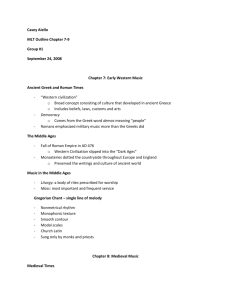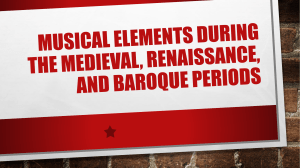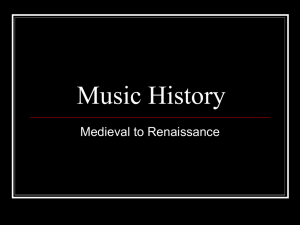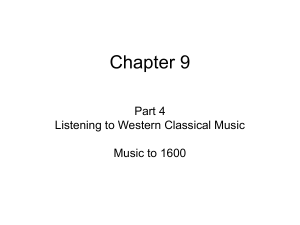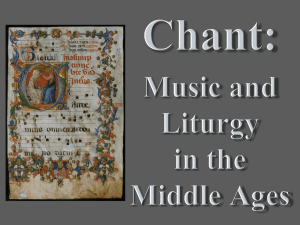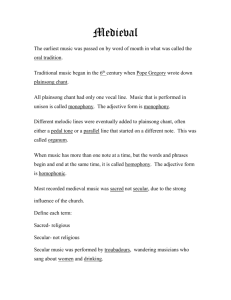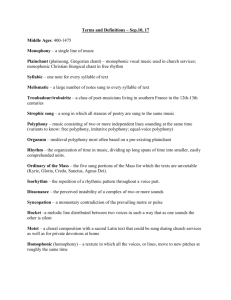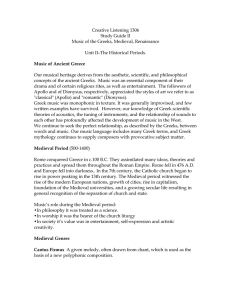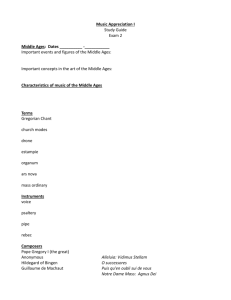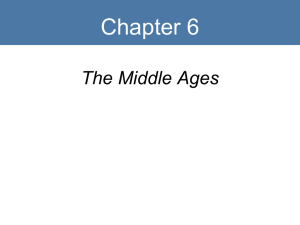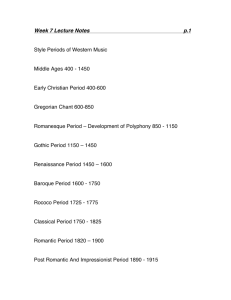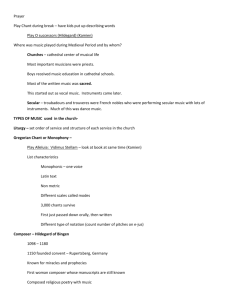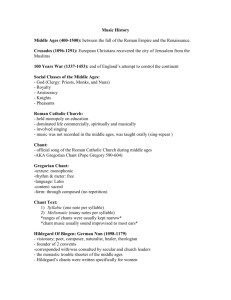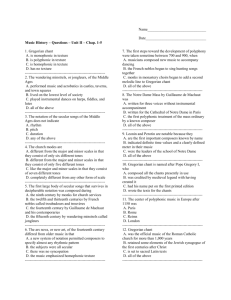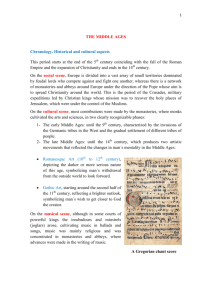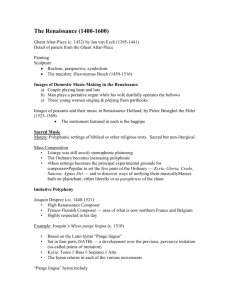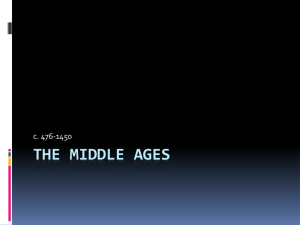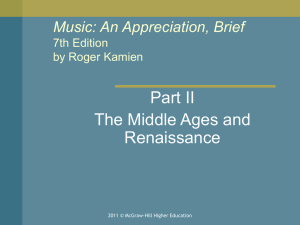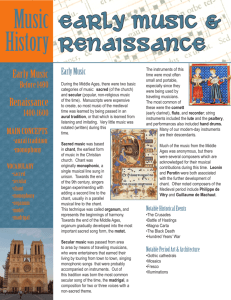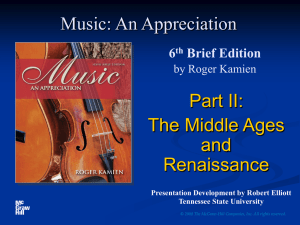MUH 2011 chapter 9 review questions
advertisement
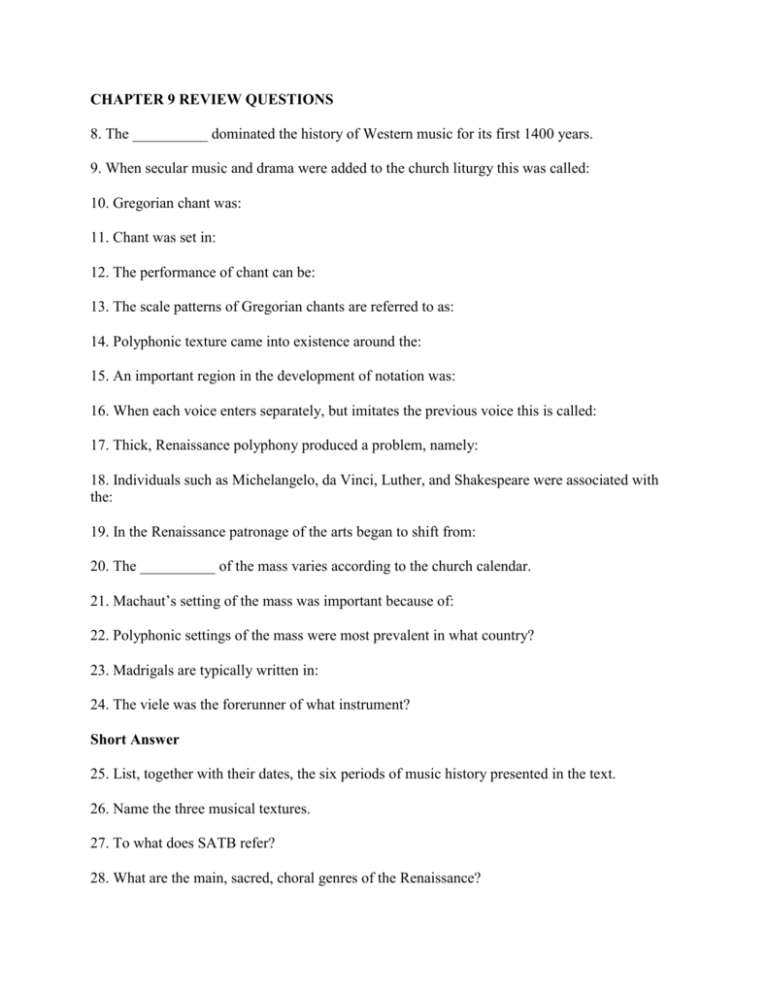
CHAPTER 9 REVIEW QUESTIONS 8. The __________ dominated the history of Western music for its first 1400 years. 9. When secular music and drama were added to the church liturgy this was called: 10. Gregorian chant was: 11. Chant was set in: 12. The performance of chant can be: 13. The scale patterns of Gregorian chants are referred to as: 14. Polyphonic texture came into existence around the: 15. An important region in the development of notation was: 16. When each voice enters separately, but imitates the previous voice this is called: 17. Thick, Renaissance polyphony produced a problem, namely: 18. Individuals such as Michelangelo, da Vinci, Luther, and Shakespeare were associated with the: 19. In the Renaissance patronage of the arts began to shift from: 20. The __________ of the mass varies according to the church calendar. 21. Machaut’s setting of the mass was important because of: 22. Polyphonic settings of the mass were most prevalent in what country? 23. Madrigals are typically written in: 24. The viele was the forerunner of what instrument? Short Answer 25. List, together with their dates, the six periods of music history presented in the text. 26. Name the three musical textures. 27. To what does SATB refer? 28. What are the main, sacred, choral genres of the Renaissance? 29. Name the five parts of the ordinary. 30. Name the two countries where madrigals flourished. 31. Name two common Renaissance keyboard instruments. 32. The reform of 1517 divided the church into what two groups? 33. What composer fought to retain polyphony in the Catholic Church during the reformation? Matching Please match the musical term to the corresponding phrase. 34. monophony:: 35. polyphony:: 36. homophony:: 37. counterpoint:: 38. The Play of Daniel:: 39. chant:: 40. melismatic:: 41. vernacular:: 42. syllabic:: 43. cantus firmus:: 44. polychoral motets:: 45. antiphonally:: 46. homorhythmic:: 47. consort:: 48. anthem:: 49. Josquin des Prez:: 50. Palestrina:: 51. Giovanni Gabrieli:: a. known for his works for multiple choirs b. best known for his motets reflecting the Renaissance attitude c. same text sung simultaneously by all voices d. singing with one note per syllable e. refers to music having a polyphonic texture f. a single line melody g. one melody supported by harmonic accompaniment h. the main musical style of the Medieval church i. when the chant is used as the basis for a polyphonic composition j. Anglican counterpart of the Latin motet k. believed polyphony and an understanding of the text could co-exist l. a group of similar instruments m. choirs singing in response to each other n. pieces for multiple choirs o. the everyday language of the people p. singing with more than one note per syllable q. music having more than one melody at the same time, each of equal importance r. a liturgical drama
